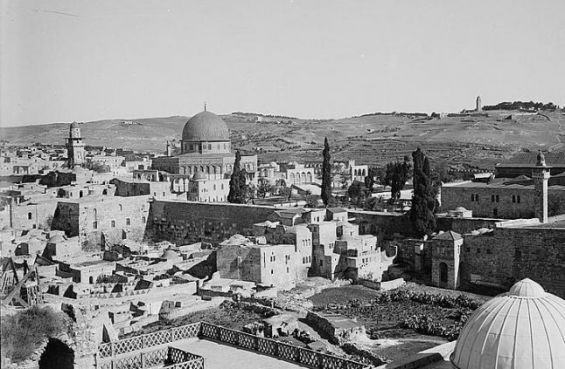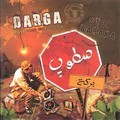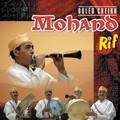While everyone is trying to understand the hows and whys of the recent decision announced by the American President, Donald Trump, intending to relocate the U.S Embassy from Tel Aviv to Al-Quds, the holy city’s history hasn’t revealed all its cards. In fact, Al-Quds is a city where Moroccans once lived, fought and prayed. Hosted by «Harat al-Maghariba» or the Maghariba quarter, thousands of Moroccans stayed in the 770-year-old neighborhood.
Historical accounts indicate that Moroccans were attached to the city starting from the 10 century. After seizing Jerusalem back and fighting alongside Salah ad-Din ibn Ayyub, a number of Moroccans stayed in the city. According to the «Moroccan Quarter : A History of the Present» (issue 7. 2000), written by Thomas Abowd and published by the Institute for Palestine Studies, «a number of historians of Jerusalem describe the Moroccan Quarter as dating from the time of the Ayyubids».

For Abowd, Afdal al-Din, who is the son of Salah ad-Din, «endowed as waqf the entire quarter of the Maghribis community» that resided in that part of the city.
«The donation took place at the time when the prince ruled over Damascus (AD 1186-1196), to which Jerusalem was joined».
Residing in Al-Quds after the Crusaders
This was confirmed in another account provided by Rashid Khalidi in his book «Palestinian Identity : the Construction of Modern National Consciousness» (Columbia University Press 1997), who insisted that the neighborhood was established 824 years ago. «The Moroccan quarter was established as a Muslim Waqf, or inalienable pious endowment, in 1193 by al-Malik al-Afdal, the som of the Ayyibid Sultan Salah ad-Din (Salahdin), who retook the city from the Crusaders», recalled the same book.
The Ayyubid sultan as reported by Thomas Abowd, also allowed the building of Hayya al-Sharif neighborhood which served as a haven for new arrivals from Morocco. This part of the city, hence, was a home for Moroccans from the thirteenth century until the last days of the Jordanian regime in 1967.
«Immigrants arrived to make their home in and visited the neighborhood from the western reaches of the Islamic world».
The Harat al-Maghariba
As described by the same book the neighborhood which was located in the Old City was roughly «10,000 square meters in size» and included «the Jami‘ al-Magharibeh near the Bab Maghribeh and the Zawiyya Fahriyya». Sultan Afdal endowed and built «al-Madrasa al-‘Afdaliyya in this quarter during the later part of the twelfth century for the use of the Maliki fuqaha (jurists)».

Living in the neighberhood for decades, Moroccans have managed to bring their culture and life style to the area as well. This was mentioned by Abdelillah Benarafa in his book «Mount Qaf : A Biographical Novel on Andalusia Mystic Muhyiddin Ibn Al-Arabi» recalling that «Moroccans are very well remembered in this town because they did wonders in the defense of the Muslims their money is fond there and people use that money very often».
According to him : «Moroccan mats which are more beautiful than silk are very well known to everybody there, the red Moroccan felt is the desire af all savants and dignitaries and al-Jahiz (an Arab prose writer and author of works of literature, Mu'tazili theology, and politico-religious polemics), mentioned that in his book on trade».
Demolished by the Israelis in 1967
Although Moroccans were able to melt in, adapt and integrate in the Palestinian society, the neighborhood’s existence came to an end. The Quarter was demolished by the Israeli state after conquering East Jerusalem in 1967, just three days after the six-day war. During the same year, Harat al-Maghariba hosted more than 650 people and 100 families.
Thomas Abowd wrote that «nearly all of the quarter‘s 135 homes were flattened by the evening of 11 June, with the 'cleaning up process' proceeding for a few days thereafter».

«Certain structures on the neighborhood‘s periphery, however, were initially retained, most notably a mosque near the Bab Maghribeh, and the Zawiyya Fakhriyya. Both, however, were eventually razed in 1969. Palestinian historian Albert Algazerian believes that these religious sites were initially left standing as a gesture to the Moroccan King Hassan II, a monarch with whom Israel wished to cultivate a relationship and with whom many Moroccans of this community maintained close ties».
Half of the neighborhood’s residents returned to North Africa, traveling to Morocco via Amman with the «assistance of King Hassan II». On the other hand, those who preferred to stay in the region took refuge in the Shufat Refugee Camp and in Jerusalem.
Although the al Maghariba Quarter was destroyed by the Israeli forces in the 60s, it is considered as one of the history’s chapters that mark the relations of friendship and solidarity that tie Moroccans to Palestinians.





 chargement...
chargement...













